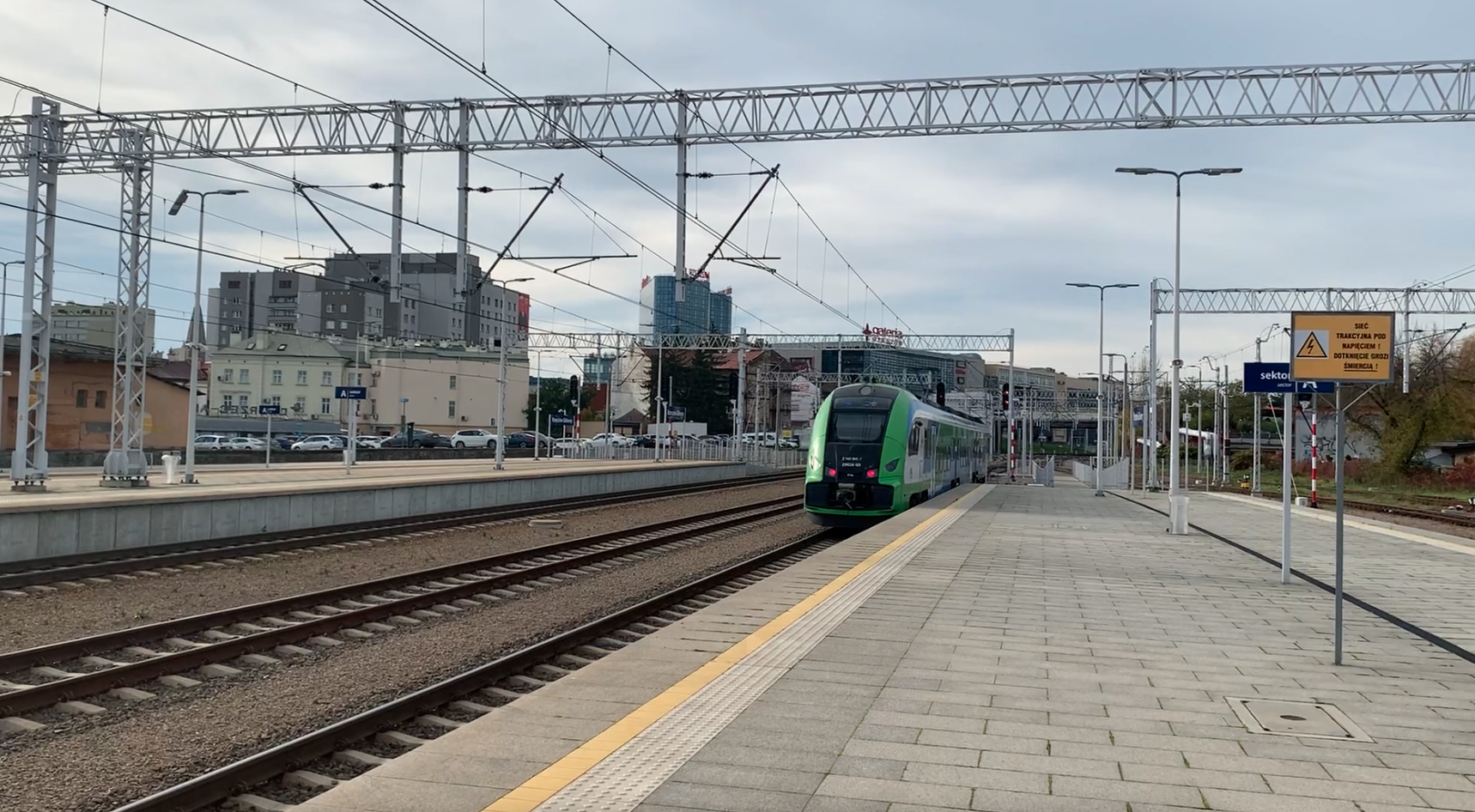Rzeszów 2025-05-24
Railway line No. 71 Ocice – Rzeszów Główny.
Railway line No. 71 Ocice – Rzeszów Główny, is practically a line that connects Tarnobrzeg with Rzeszów. The line is 67.374 km long and runs meridionally. The line was built in a standard gauge. The line is single-track and electrified (2021) with 3 kV DC current. The maximum speed of the train is 120 km/h.
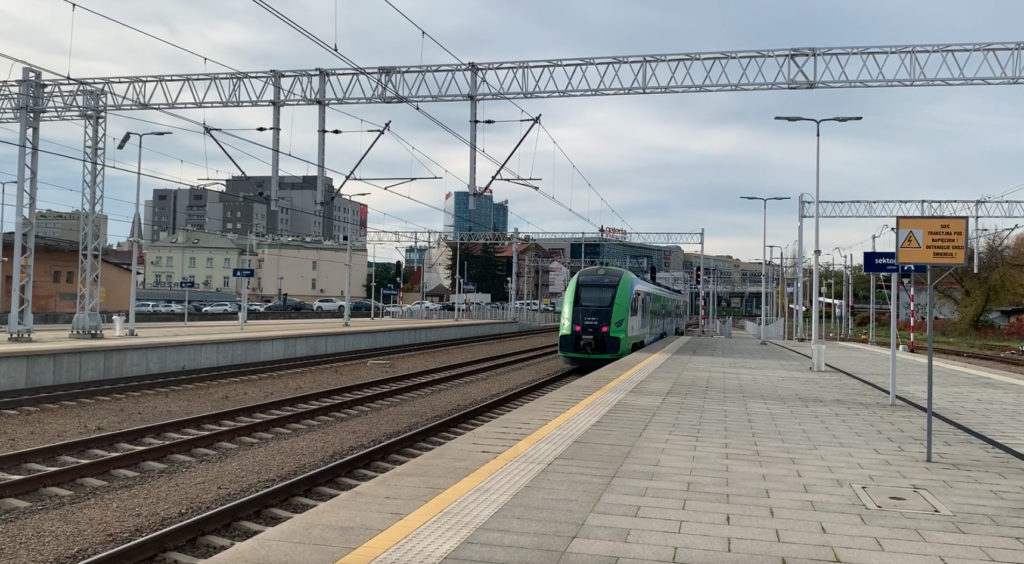
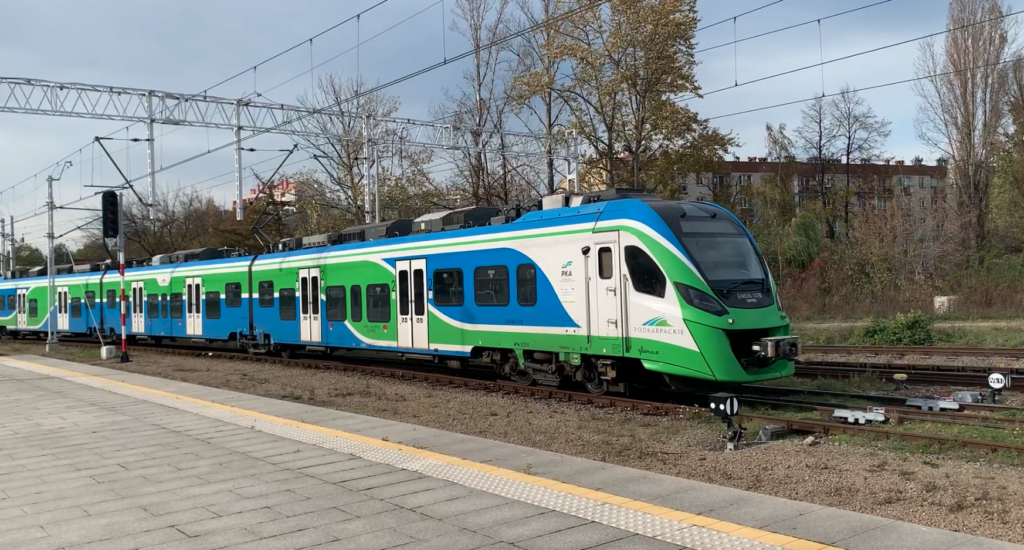
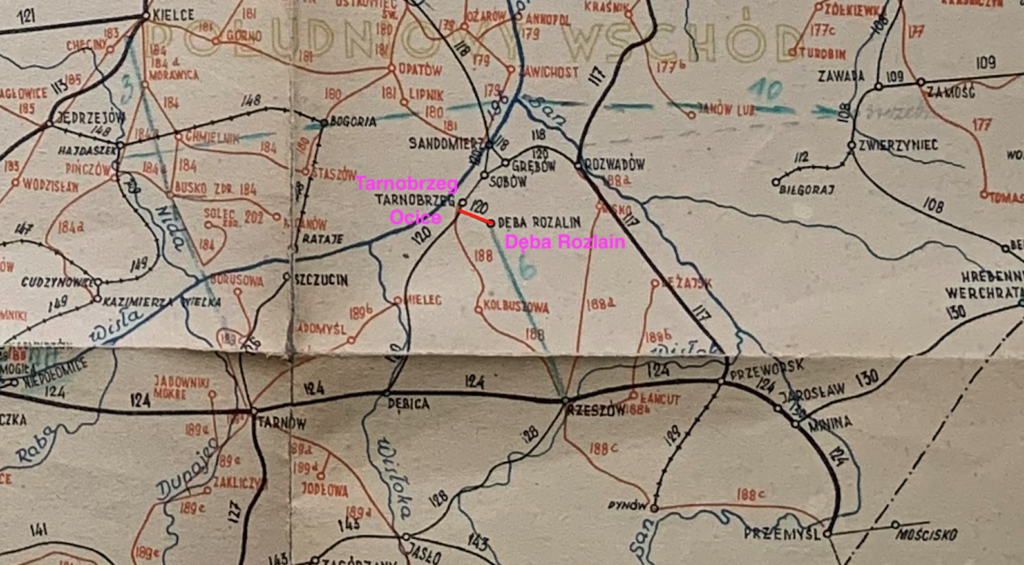
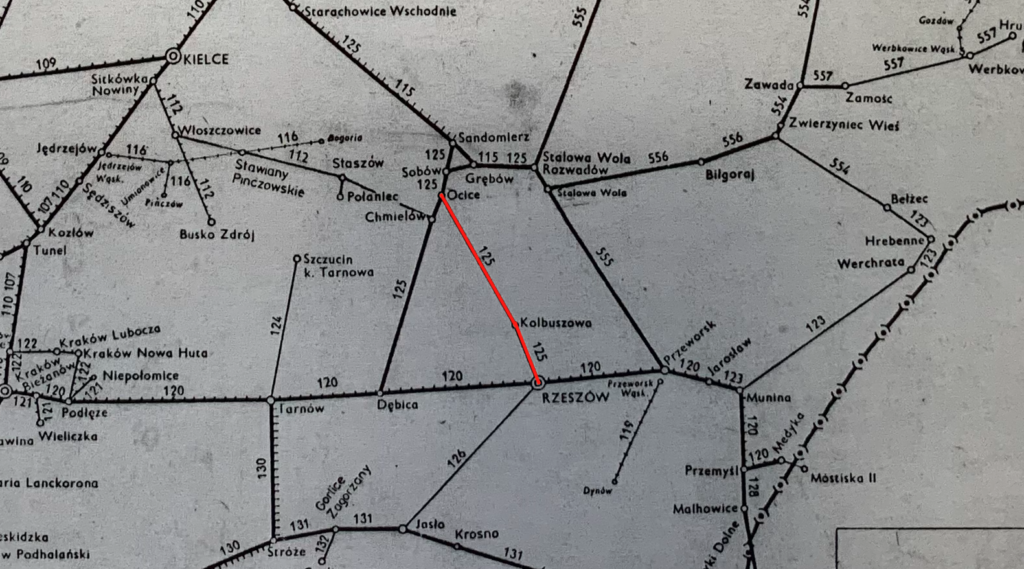
History of LK No. 71.
The line was built with great difficulty and for a very long time. The line was to connect the Kraków-Lviv railway line with Sandomierz. At that time, construction of the Lublin-Sandomierz-Tarnobrzeg line had already begun. The construction of the line in the Sandomierz Basin was planned even when Poland was under Austro-Hungarian rule. The planned line was to lie entirely within Galicia. The initiative had the support of the government in Vienna. However, at that time, the line had not even been marked on a map. That is why a dispute arose between the authorities of Dębica and Rzeszów. Both cities believed that the beginning of the new line would be in their city. However, in 1914, the Great World War broke out and it was not possible to start the construction of the line. The plans were resumed during the Second Polish Republic, when plans were made to build the Central Industrial Region. On August 5, 1919, the Act of July 19, 1919, on the construction of the Rzeszów-Sandomierz line, came into force. The line was planned to run through Kolbuszowa, Tarnobrzeg and Sobolów. Ultimately, this is how the line was run.
In 1938, the Ocice – Dęba Rozalin section was launched. Further plans were interrupted by World War II. Construction resumed after the end of hostilities. In the period 1960-1964, the Rzeszów – Kolbuszowa section was launched. In 1971, the Dęba Rozalin – Kolbuszowa section was launched, thus completing the line.
Rail traffic was mainly based on freight transport. A large percentage of these were military eczeolons. There were also passenger trains, but due to the lack of electrification, they were operated by steam locomotives, and from 1972, also by diesel locomotives. It was difficult to maintain long-distance trains, due to the necessary replacement of locomotives.
Since 1990, rail traffic on the line has been systematically decreasing. In 1992, express trains stopped running on the line. In 2000, passenger traffic was completely suspended. In June 2001, freight train traffic was completely suspended on the Dęba Rozalin – Kolbuszowa – Widełka section. All this was related to the liquidation of the Polish railway by liberal and post-communist governments. In the period 2006-2008, under the right-wing government, attempts were made to restore rail traffic. They began by clearing the tracks of self-seeding plants, bushes and grass. The switches, traffic lights and rail-road crossings were renovated.
On March 1, 2007, passenger traffic was resumed on the Rzeszów – Kolbuszowa section. Since 13 December 2009, it has been used by passenger trains on the Rzeszów–Stalowa Wola Rozwadów route and since 12 December 2010, from Rzeszów to Lublin. The latter route was suspended in 2013. On 1 March 2011, a long-distance connection was launched from Zamość to Zielona Góra, using LK No. 71. In 2014, plans were prepared to electrify LK No. 71. However, there was no tender and the work did not begin. In September 2016, the construction of the new Chmielów Zagumnie stop was completed. In the period March 2019–May 2019, a passing loop was built at the Majdan Królewski stop.
Thanks to the actions of the government in Poland – the United Right, on 16 November 2018, a contract for the electrification of line No. 71 was signed with PKP Energetyka. Electrification lasted from September 2019 to January 2021. It was one of the most important railway investments in southeastern Poland. Electrification allowed the launch of EZTs, which belong to Koleje Podkarpackie – PolRegio (Podkarpacka Kolej Aglomeracyjna). On December 12, 2021, a long-distance InterCity train was launched on the Rzeszów – Szczecin route, via LK No. 71. Previously, the train ran through the stations; Przeworsk and Nowa Sarzyna. The travel time was significantly shortened. Since January 3, 2022, Podkarpacka Kolej Aglomeracyjna has already launched 16 pairs of trains on the Rzeszów Główny – Kolbuszowa route.
The route of LK No. 71.
Ocice station (0.00 km, elevation 153 m). This is where LK No. 71 begins, and it starts from LK No. 25 Łódź Kaliska – Dębica.
Chmielów Zagumnie passenger stop (0.49 km, elevation 153 m). The line crosses the rivers: Mokrzyszówka and Trześniówka. The line temporarily runs in a south-easterly direction.
Cygany was a branch post (1.55 km, elevation 152 m), for LK No. 71a. The post was located near the bridge over the Trześniówka river. The line branched off in a north-easterly direction, to the Jeziórko and Olendry stations. The line used to have No. 932. The old track remained, overgrown with self-sown trees. The track system allowed for travel to the Grębów LK No. 84 station. The Olendry station was built for the needs of the Siarkopol Sulphur Mine and Processing Plants in the 1970s. It was used to service the nearby Siarkopol mine lines. Sulphur extracted in nearby Jeziórko was transported by rail. The junction station in Olendry connected with the station in Grębów and the branch post in Furmany. About a kilometer from the station, in the 1980s, a heating plant was built, to which a siding was connected, which was used to transport hard coal. The Olendry heating plant, for almost 20 years, provided heat for the residents of Tarnobrzeg, and was closed in 2001. The Olendry station was definitively closed in 2008, because the sulphur mines were closed. Traffic at the station was suspended. Currently (2025) it is an abandoned place.
Cygany passenger stop (2.09 km, elevation 152 m). The stop is located next to the rail-road crossing on the main street of Targowa. The village of Cygany in 2011 had 1,086 inhabitants. Then the line crosses local roads twice at the intersection.
Jadachy passenger stop (5.47 km, elevation 154 m). The stop is located near the settlement of Kozielec. At the stop there is a rail-road crossing on the route of DK No. 9. Road DK No. 9 accompanies the railway line to Rzeszów itself. After the stop the line enters the Sandomierz Forest.
Tarnowska Wola passenger stop (10.01 km, elevation 157 m). The passenger stop is located at the intersection with the local road. The village of Tarnowska Wola in 2011 had 861 inhabitants.
Dęba Rozalin passenger stop (12.68 km, elevation 166 m). The station was built in 1938. The station was closed in 2000. In 2009, a passenger stop was opened here. The stop is located near Dęba, which is part of the city of Nowa Dęba. In front of the stop there is a large freight station, which currently has four through tracks and all are electrified. Railway sidings have been and are leaving from the station. There was a siding to the sawmill. There was a siding to the DEZAMET Metal Plant. There is a siding to the military ramp, which serves the neighboring military training ground.
Nowa Dęba passenger stop (14.18 km, elevation 182 m). The stop was launched in 1971. Closed in 2000. Reopened in 2009. The stop is located in the forest, between the town of Nowa Dęba and the “Euro-Park Wisłosan in Nowa Dęba” Subzone. Further on, the line crosses the Koniecpółka River. Then the line passes under the railway line of the Metallurgical-Broad Gauge Line.
Huta Komorowska passenger stop (18.29 km, elevation 200 m). Next to the stop is the intersection with DW No. 872. The stop was launched in 2017. The village of Huta Komorowska in 2021 had 1,390 inhabitants.
Majdan Królewski passenger stop (19.80 km, elevation 204 m). The stop was built in 1971 as a passing loop. The second track was dismantled around 2005. In 2009, the stop was reopened with a single track. In 2019, the passing loop was recreated. The stop is located near the Gubernia settlement, which belongs to the village of Majdan Królewski. In 2021, the village had 2,872 inhabitants. Then the line passes under DK No. 9 (Rzeszowska Street).
Majdan Królewski Podlasek passenger stop (22.28 km, elevation 221 m). The stop was opened in 2017, from the commune’s funds. The stop is located at the intersection with Polesie Street. The line enters the forests again.
Komorów Podmurynia passenger stop (23.83 km, elevation 211 m). The stop was opened in 1985. It was closed in 2000. Reopened in 2009. The stop is located in the Podmurynia settlement, at the intersection of a local road.
Cmolas passenger stop (31.28 km, elevation 210 m). The stop was launched in 1971. It was closed in 2000. Reopened in 2009. The stop is located at the intersection with Lasowiacka Street. In 2020, the village of Cmolas had 3,064 inhabitants. Then the line crosses the Przyrwa River.
Zarębki passenger stop (33.62 km, elevation 200 m). The stop was launched in 1971. Closed in 2000. Reopened in 2009. The stop is located at the intersection with a local road. Zarębki is a typical linear village, which in 2020 had 896 inhabitants. Further on, the line crosses Tamobrzeska Street at an intersection. Then the line passes under DW No. 875 and a little further there is an intersection with Tyszkiewiczów Street.
Kolbuszowa station (36.89 km, elevation 210 m). The station was launched in 1973 as a train and bus station. In 2009, the station was rebuilt. Currently, there are 3 tracks and 2 platforms. LCS was built. In the period 2020-2022, the station building was rebuilt. On the eastern side of the station is the Kolbuszowska Furniture Factory “Furniture”. Kolbuszowa is a city that in 2024 had a population of 8,495 inhabitants.
Kolbuszowa Górna passenger stop (39.96 km, elevation 215 m). The stop was built in June 2023. The stop is located at the intersection with a local street.
Widełka passenger stop (45.43 km, elevation 241 m). The stop was opened in 1964. In 2000, rail traffic was suspended. In 2007, traffic was resumed on the Rzeszów – Kolbuszowa section. In 2009, traffic was resumed on the entire line, and at the same time the location of the stop was changed. The village of Widełka in 2020 had a population of 2,296 inhabitants. After the stop, the line crosses DK No. 9 at the top.
Widełka Orlen fuel base (46.75 km, elevation 238 m). All side tracks are tracks belonging to the “Orlen Metro Tank” fuel base. At the base, the line crosses Widełka Street at the intersection.
Budy Głogowskie passenger stop (50.35 km, elevation 248 m). The stop was opened in 1964. In 2000, it was closed. On February 1, 2011, it was reopened. Before the stop, the line runs at the top above Pejzażowa Street.
Głogów Małopolski station (53.97 km, elevation 228 m). The station was launched on July 22, 1960. It was closed in 2000. On March 1, 2007, it was reopened on the Rzeszów – Kolbuszowa route. In 2010, the station was modernized; one main track, two additional main tracks, one cargo track. In 2018, the station was modernized to create a transfer hub. In front of the station there is an intersection with 3 Maja Street. The city of Głogów Małopolski in 2024, had a population of 10,583 inhabitants.
Głogów Małopolski Niwa passenger stop (55.45 km, elevation 220 m). The stop was launched on June 11, 2023. The stop is located at the intersection with Wola Cicha Street.
Rogoźnica near Rzeszów passenger stop (57.64 km, elevation 211 m). The stop was launched on December 13, 2009. The stop is located within the city limits of Głogów Małopolski, in the Podbór district. Then the line runs under DW No. 869, a little further it runs under the A4 motorway. At this point, LK No. 71 meets the LK No. 626 siding to the passenger stops: Głogów Małopolski Południowy and Lotnisko Jasionka.
Zaczernie station (60.16 km, elevation 204 m). The station was launched in 1960. In 2000, the station was closed. On March 1, 2007, the station was reopened. The station has two platforms and two platform edges. The station serves as a passing place. The siding to the airport departs from LK No. 71 a little earlier, from one track. Then the line crosses the Mrowla River.
Rzeszów Miłocin passenger stop (62.43 km, elevation 214 m). The stop was opened in 1974. In 2000, the stop was closed and reopened in 2009.
Rzeszów Staromieście passenger stop (63.90 km, elevation 212 m). The stop was launched on June 11, 2023. The stop is located at the height of the Rzeszów Baranówka passenger stop, which belongs to the line towards Krakow.
Rzeszów Zachodni passenger stop (65.28 km, elevation 208 m). The stop was launched on June 9, 2019. There are two platforms and three platform edges at the stop. There are LK No. 91, 611 here.
Rzeszów Główny station (66.78 km, elevation 203 m). The station was established on November 15, 1858. There are LK No. 71, 91, 106 here. There is LCS here. There are three platforms and 6 platform edges at the station. There is a tunnel under the platforms at the station, ticket offices, shopping points, railway information, parking, public transport and TAXI.
LK No. 71 allows passenger trains to travel at a speed of 120 km/h and 80 km/h for freight trains. There are 5 railway stations and 20 passenger stops on the line.
Electrification.
On December 12, 2021, electric trains started running on the electrified LK No. 71 line. The investment cost PLN 67 million and was financed from the state budget. The electrification of the single-track Ocice – Rzeszów route has enabled an increase in the offer for passengers. The new 2021/2022 timetable includes more long-distance and regional trains on the route, including to Stalowa Wola Południe and to Warsaw and Szczecin. Among the approximately 35 pairs of connections are also the agglomeration Rzeszów Główny – Kolbuszowa – Rzeszów Główny, which are planned from January 2022. The Intercity train from Rzeszów to Szczecin, instead of via Przeworsk, Nowa Sarzyna, travels on a shorter, electrified route via Kolbuszowa, Tarnobrzeg. Additionally, the passing loop at the Majdan Królewski passenger stop increases the route’s capacity.
Currently (May 2025) there are 14 pairs of trains running on the Rzeszów – Kolbuszowa route. The journey time is about 35 minutes. These are mainly PolRegio trains, the Podkarpacki branch. There are also two pairs of InterCity trains: 31104 WITOS (Przemyśl – Warszawa Wschodnia), 31106 SAN (Przemyśl – Warszawa Wschodnia). The trains cover the distance in 20 minutes. The entire Rzeszów – Tarnobrzeg route is covered by 8 pairs of trains. Six PolRegio trains and the aforementioned InterCity trains. PolRegio trains travel in about 1 hour 25 minutes, and InterCity trains in about 48 minutes. Ticket prices range from PLN 17 (PolRegio) to PLN 26 (InterCity).
During the United Right, a plan for the Central Communication Port (CPK) was developed. The plans included the creation of so-called railway spokes. Spoke No. 6 was planned for Podkarpacie. The spoke was to have two starting points: Krosno and Sanok. In Rzeszów, both lines were to connect. The next towns were: Stalowa Wola, Ostrów Świętokrzyski, Radom, Grójec and CPK. The line was to use part of the existing railway routes, and the remaining part was to be built from scratch. Unfortunately, in 2023, the Organized Crime Group came to power, which liquidated the CPK program.
Written by Karol Placha Hetman
